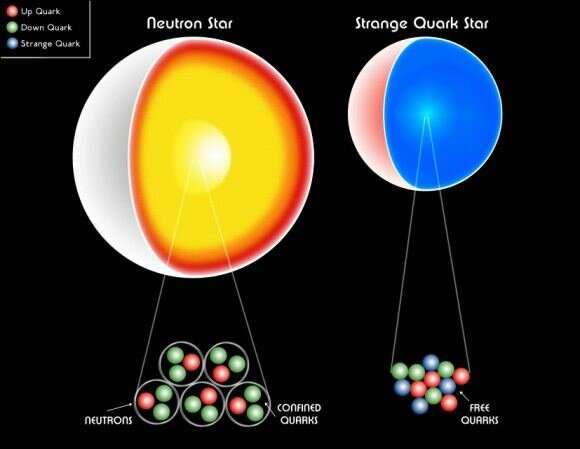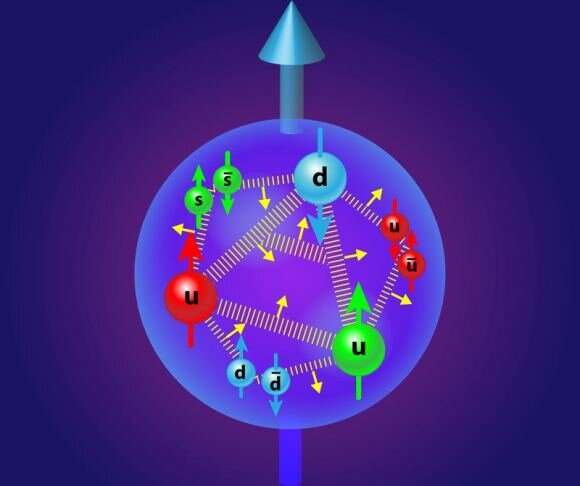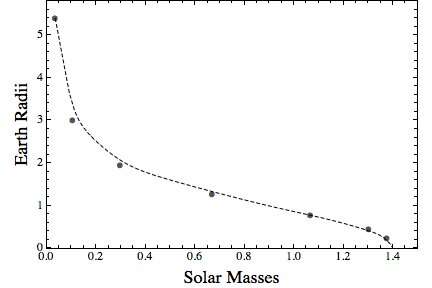Neutron star vs a quark star. Credit: CXC/M. Weiss
Matter is built around quarks, forming the nuclei of the atoms and molecules. While there are six types of quarks, regular matter contains only two: up quarks and down quarks. Protons contain two ups and a down, while neutrons contain two downs and an up. On Earth, the other four types are only seen when created in particle accelerators. But some of them could also appear naturally in dense objects such as neutron stars.
The standard model for neutron stars holds that neutrons remain largely intact within their interior. Thus, a neutron star is like a huge atomic nucleus held together by gravity rather than the strong nuclear force. But astronomers don't fully understand how neutrons interact at extreme temperatures and densities. It's possible that within a neutron star, the neutrons break down into a soup of quarks, forming what is known as a quark star. Quark stars would look like neutron stars but would be slightly smaller.
If quark stars exist, then it's possible that high-energy up and down quarks could collide to create strange quarks. Strange quarks are much heavier than up and down quarks, so they would tend to form a new type of nucleon known as strangelets. A simple strangelet would consist of an up, down and a strange quark. Because strangelets are much denser than protons and neutrons, contact between the two would rip apart the protons and neutrons to create more strangelets. Essentially, if strange matter comes into contact with regular matter, it doesn't take long for it to be converted to strange matter. You could have everything from strange stars to strange planets.
Strange quarks can appear in regular nucleons. Credit: APS/Alan Stonebraker
While strange matter is an interesting idea, it isn't a popular one. To begin with, if strange quark matter forms in some neutron stars, it should form in all of them, causing them to collapse. But we see lots of neutron stars that are too large to be strange quarks. There's also the fact that strange quarks can appear within regular protons and neutrons. For example, although a proton is made of two up quarks and a down quark, that's really only an average. Quantum fluctuations mean that strange quarks can appear for short periods of time. But they aren't stable and don't convert nucleons into strange matter. So if strange matter does exist, it likely only exists within large, dense objects.
Still, it is worth looking for strange matter objects in the universe, and recently, a study has found a few candidates. The study searched for a type of object known as strange dwarfs. These hypothetical objects have a mass similar to a white dwarf, but instead of being made of regular matter in a degenerate state, they are made of strange quark matter. As a result, they would be much smaller than white dwarfs.
To find these objects, the team looked at data from the Montreal White Dwarf Database (MWDD), which has data on more than 50,000 white dwarfs. For about 40,000 of them, the database lists both the mass and surface gravity of the white dwarfs. The mass of a white dwarf can be determined by the Doppler shift of its light as it orbits a companion star or by gravitational lensing, while the surface gravity can be measured by the gravitational redshift of its light.
If you know the mass and surface gravity of a star, you can easily calculate its radius. The team did this and then compared the results to the mass and radius relation for white dwarfs. Most of them followed the relation, but eight of the stars didn't. They were much smaller in size and matched predictions for a quark dwarf.
The data of this work isn't strong enough to prove these objects are strange dwarfs, but they are worth further study. Something is strange about them, and it would be good to determine whether that's due to strange quarks or something else.
More information: Searching for Strange Quark Matter Objects Among White Dwarfs. arXiv:2012.05748 [astro-ph.SR] arxiv.org/abs/2012.05748
Provided by Universe Today


























